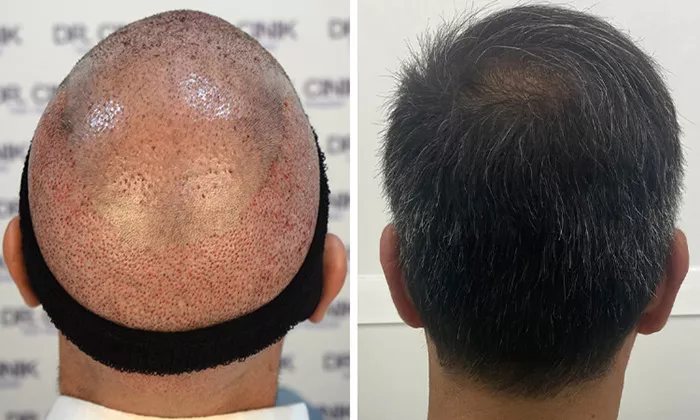Hair transplants have become increasingly popular over the years as a viable solution for hair loss. However, not all hair transplant procedures yield successful results. There are various reasons why hair transplants may fail, ranging from patient factors to surgical techniques. Understanding these factors can help both patients and hair restoration specialists improve the success rates of hair transplant procedures. In this article, we will delve into the ten most common reasons why hair transplants fail.
10 Reasons Why Hair Transplants Fail
1. Inadequate Candidate Evaluation
One of the primary reasons for hair transplant failure is an inadequate evaluation of the candidate. Patients who are not suitable candidates for hair transplants may experience poor outcomes. Factors such as insufficient donor hair supply, unrealistic expectations, and underlying medical conditions can contribute to transplant failure. It is crucial for surgeons to thoroughly assess candidates’ medical history, hair loss pattern, and expectations before proceeding with the surgery.
2. Poor Donor Hair Quality
The success of a hair transplant largely depends on the quality of the donor hair. In some cases, patients may have poor donor hair quality, characterized by thin, weak, or miniaturized hair follicles. Using low-quality donor hair can result in unnatural-looking transplants with limited coverage and density. Surgeons must carefully evaluate the donor area to ensure sufficient hair quality for successful transplantation.
3. Incorrect Hairline Design
Another common reason for hair transplant failure is the incorrect design of the hairline. A natural-looking hairline is crucial for a successful transplant, but inexperienced surgeons or inadequate planning can lead to an unnatural appearance. Factors such as hairline placement, shape, and symmetry must be carefully considered to achieve a harmonious and aesthetic result.
See also: Hairneva Unveils DHI Technique for Authentic Hair Transplants
4. Inadequate Graft Survival
The survival of transplanted hair grafts is essential for a successful outcome. Factors such as graft handling, storage, and placement techniques can influence graft survival rates. Improper handling or trauma during transplantation can damage grafts and reduce their viability. Surgeons must employ meticulous techniques to ensure high graft survival rates and optimal results.
5. Poor Surgical Technique
The surgical technique used during hair transplantation plays a significant role in the success of the procedure. Both the FUT (Follicular Unit Transplantation) and FUE (Follicular Unit Extraction) methods have their advantages and limitations. Poor surgical technique, such as improper graft extraction, placement, or closure, can lead to suboptimal results and increased risk of complications. Surgeons must have extensive training and experience in hair transplant techniques to minimize the chances of failure.
6. Postoperative Care
The postoperative care and maintenance of transplanted hair are crucial for the success of the procedure. Patients must follow specific guidelines provided by their surgeon regarding washing, grooming, and protecting the transplanted area. Failure to adhere to postoperative care instructions can result in graft damage, infection, or delayed healing, leading to poor outcomes.
7. Scalp Infections
Scalp infections are a potential complication following hair transplant surgery that can contribute to failure. Infections can occur due to poor surgical hygiene, inadequate sterilization of instruments, or patient factors such as pre-existing scalp conditions. Prompt diagnosis and treatment of scalp infections are essential to prevent graft damage and ensure successful hair growth.
8. Shock Loss
Shock loss, or temporary shedding of existing hair following a transplant, is a common occurrence that can affect the overall appearance of the result. While shock loss is usually temporary, factors such as poor graft handling, aggressive implantation, or underlying scalp conditions can exacerbate this phenomenon. Patients should be informed about the possibility of shock loss and its expected timeline during the consultation process.
9. Unrealistic Expectations
Unrealistic expectations on the part of the patient can lead to dissatisfaction with the results of a hair transplant. While modern techniques can achieve significant improvements in hair density and coverage, it is essential to manage patients’ expectations realistically. Patients with unrealistic expectations may perceive the transplant as a failure, even if the procedure was technically successful.
10. Underlying Medical Conditions
Underlying medical conditions can impact the success of a hair transplant procedure. Conditions such as autoimmune disorders, uncontrolled diabetes, or scalp conditions like alopecia areata can affect hair growth and graft survival. It is crucial for patients to disclose their medical history fully, allowing surgeons to assess any potential risks or contraindications before proceeding with the transplant.
Conclusion
While hair transplants can be an effective solution for hair loss, several factors can contribute to their failure. Adequate patient evaluation, careful surgical planning and technique, proper postoperative care, and realistic expectations are crucial elements for successful hair transplant outcomes. By addressing these factors comprehensively, both patients and hair restoration specialists can work towards improving the success rates and satisfaction levels associated with hair transplant procedures.
You May Be Interested In

